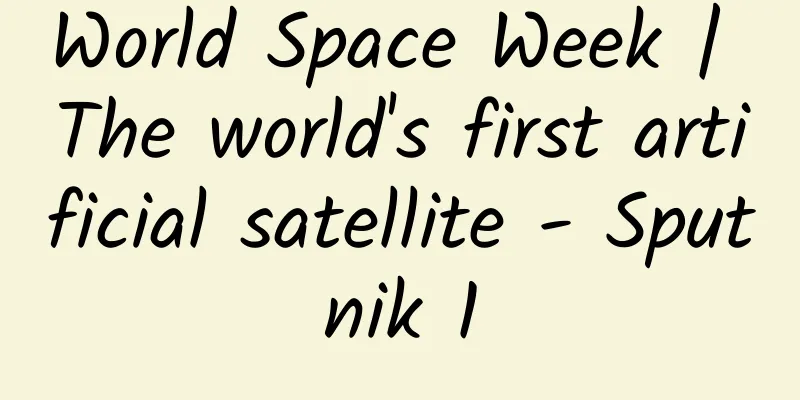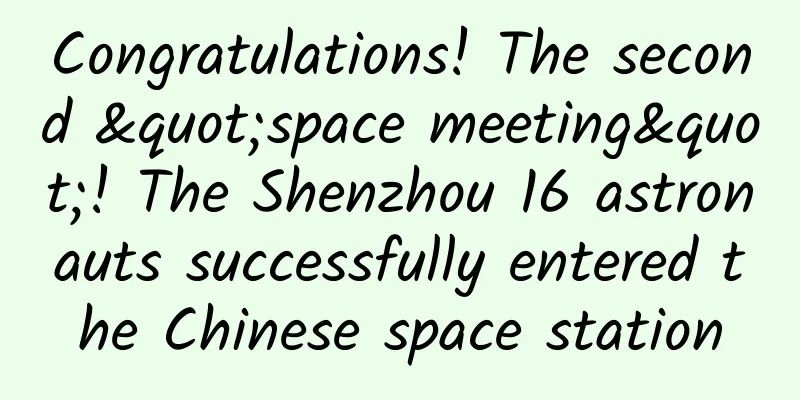World Space Week | The world's first artificial satellite - Sputnik 1

|
On October 4, 1957, the world's first artificial satellite, Sputnik 1, was launched into space. Sputnik 1 (Russian: Спутник-1, also known as "Satellite One", the original Russian name means "traveler") was modified by the former Soviet rocket expert Korolev from a missile and launched from the Baikonur Cosmodrome in Kazakhstan by the Sputnik carrier rocket. Sputnik 1 was in orbit for 92 days, flew around the earth about 1,400 times, and traveled 60 million kilometers. Finally, on January 4, 1958, it broke away from orbit and fell into the atmosphere and burned up, announcing the arrival of the human space age. (Image credit: NASA) The spherical satellite is not very impressive. Its main body is a sphere made of aluminum alloy with a diameter of 58 cm and a weight of nearly 83.6 kg. Four spring whip antennas are attached to the outside of the sphere, one pair of which is 240 cm long and the other pair is 290 cm long. Although three silver-zinc batteries account for about 60% of its weight and its rated power is only 1 watt, these did not prevent it from sending radio wave signals to the earth at frequencies of 20.005 and 40.002 MHz within three weeks after launch. When Sputnik 1 was launched from the Baikonur Cosmodrome in Kazakhstan, it was the International Earth Observation Year (also known as the International Geophysical Year) announced by the United Nations. It escaped the Earth's gravity at a speed of 29,000 kilometers per hour, becoming the first man-made object to enter outer space, sending radio wave signals to the Earth from outer space, which could be received by amateur radio users. Its transmission continued until October 26, 1957, when it was interrupted due to battery exhaustion. In early 1958, Sputnik 1 lost power, broke away from its working orbit and fell into the atmosphere. The significance of the launch of Sputnik 1 is that by measuring the changes in its orbit, it helps to study the density of the Earth's atmosphere at high altitudes and provides raw data for radio wave transmission in the ionosphere. Since the satellite was filled with compressed nitrogen, Sputnik 1 also made the first attempt at meteorite detection by an artificial object. Since the high-temperature meteorite penetrated the surface of Sputnik 1, causing its internal pressure to leak, this also provided evidence of the extremely high temperature of the meteorite. (Photo source: Sina Military) Sputnik 1 was a product of the era of space enlightenment and a symbol of space competition during the Cold War. The Soviet Union was developing a missile that could carry a hydrogen bomb to strike the United States, the R-7 ballistic missile. The R-7 (Russian: Семёрка, NATO code name SS-6 "Baton") is the world's first true intercontinental ballistic missile. It was developed by the Soviet Union during the Cold War and finalized in 1959 and equipped with the Soviet Strategic Rocket Forces. The R-7 is a single-stage liquid-fueled single-warhead missile. Due to problems such as fuel filling, it has no actual combat capability. Missile engineer and astronaut Georg Kigrechko said that because the R-7 missile was not told the weight of the warhead it carried, it was built with extremely strong thrust, "far stronger than all the missiles the United States had at the time." The mismatch between the thrust and payload capacity of the missile at the time made the missile the perfect carrier for launching an object into space. "The key reason behind Sputnik was the Cold War atmosphere and competition with the United States," Chertok said. When the warhead project hit a snag, Korolev seized the opportunity and persuaded the Soviet government to allow him to launch a satellite. The Soviet government approved Korolev's request in January 1957. The launch of "Sputnik 1" shocked the entire West during the Cold War and triggered a series of events in the United States, such as the Sputnik crisis and a small stock market crash on Wall Street. It also started the space race between the United States and the Soviet Union that lasted for more than 20 years and became a major point of competition between the two powers during the Cold War. |
>>: The 2023 Nobel Prize in Physics has been announced! Learn about the history of attosecond pulses
Recommend
The amount of water is nearly 5,000 times that of the Earth's oceans! Where does the water of this "ocean planet" in the universe come from?
Duan Yuechu Huang Xianghong In the vast universe,...
The efficacy and function of knotweed
The effects and functions of knotweed are clearin...
The efficacy of wild Ganoderma lucidum
Ganoderma lucidum is very common nowadays, but it...
The circle of friends is flooded with messages! A "flying saucer cloud" appeared over Beijing! It indicates...
Talking about Cloud Everyone is familiar with Oft...
The secret of down jackets to keep warm can no longer be hidden
Produced by: Science Popularization China Produce...
Can motherwort treat dysmenorrhea?
Many female friends have to experience abdominal ...
The elevator suddenly fell! How to start "self-rescue"?
Image source: Tuchong Creative If you often take ...
The efficacy and function of puppy spine
Guppy's spine is a very common Chinese medici...
How to prevent chronic diseases that kill 41 million people a year?
Author: Zhang Fengguang, epidemiology expert, cha...
How can a healthy blood vessel become blocked? Here are the key points to prevent blood vessel blockage!
Expert of this article: Fang Jie, Associate Chief...
The efficacy and function of Astilbe root
Astilbe root is a traditional Chinese medicine. I...
The efficacy and function of yellow catfish
As a traditional Chinese medicine, yellow carp pr...
How fast is the Earth moving on a cosmic scale?
The earth, this blue planet, not only dances on i...
Let me tell you about an exciting animal... (screaming the whole time)
Addendum 1: Many people may have heard of this me...
The efficacy and function of Shiliangye
Shiliangye is a relatively common medicinal mater...









